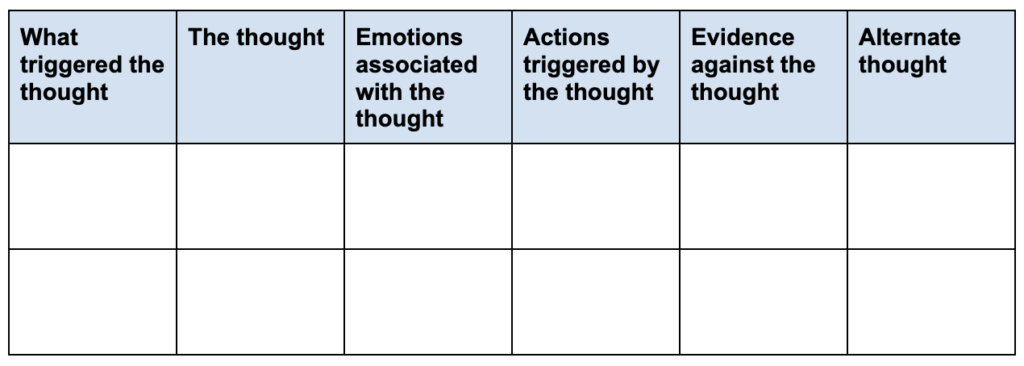Therapeutic journaling is a self-care practice that anyone can access. It’s easy to pick up a journal and pen, though maybe you’re not quite sure where to start. Here are 5 tips for therapeutic journalling.
This post is all about 5 Tips for Therapeutic Journaling

What is therapeutic journaling?
Writing can be a very cathartic practice for many, therapeutic journaling uses writing and reflection for therapeutic benefits. It blends both talk and writing therapy and can help to provide a deeper perspective on your internal thoughts.
Journalling is an excellent way to move through a difficult time or process complex emotions. Journaling can enhance your general outlook on life and guide you through feelings like grief or shame. At times sharing your feelings with someone else may feel out of reach. Journaling gives you a place to share those while feeling safe rather than holding them in.
5 tips for therapeutic journaling
1. Write a letter to your future self
This is an especially helpful practice around your birthday, the new year, or other milestones. Though it’s also great for when you’re moving through a really difficult situation like the loss of a loved one.
Sit down and write a letter to yourself expressing what you’re feeling at that moment, and where you imagine yourself to be emotionally one year from now. You can offer yourself support and gratitude for helping yourself get to where you want to be. If it’s the start of a new year or your birthday you may want to reflect on the past year and outline things you’d like to achieve in the next.
Draft the letter as if you’re speaking to a distant friend, and then attach it to an email that you schedule to yourself exactly one year later. In a year’s time you’ll receive an insightful note from your past self that will likely inspire you to keep the practice going.
2. Brain dump
Our brains may feel foggy when we’re experiencing a traumatic event, going through a big life transition, or just feeling overwhelmed. Brain dumps are a therapeutic journalling process where you write out every single thing that is taking up space in your brain. This is great for gaining clarity.
Open a fresh page in your journal or pull up a document on your computer and free-write until you feel some relief. The key is to free-write without thinking too much about what you’re writing down, you don’t want to self-edit as you go, you just want to clear up some space by letting it all out.
This practice can also work for finding solutions, we tend to look externally for solutions or validation when we have the answers ourselves all along. Try writing the question along the top of a page for example: “What should I do about my friendship x that’s been feeling sticky?” and then free write whatever responses come to you without second guessing. You’ll be surprised at what inner guidance was just sitting beneath the surface this whole time.
3. Use Journal prompts
Journal prompts are an excellent resource for folks who are new to therapeutic journaling. When you first start journalling you may find yourself editing your responses, unable to really go deep with yourself, or completely blanking. It can be an overwhelming practice for some especially if you feel insecure about your writing, but remember, no one is reading this but you! Journal prompts are an excellent way to release some of that pressure and they help to guide your process. Keep reading below for some journalling prompts you can get started with right now!

4. Create a thought log
Thought logs are a game changer when it comes to therapeutic journaling techniques! They are an excellent tool for getting to the root of what causes our negative thought loops. A negative thought loop is when you get stuck in a pattern of negative thoughts.
Grab a piece of paper or open up a doc on your computer and make the following columns:
What triggered the thought/ The thought / Emotions associated with the thought / Actions triggered by the thought / Evidence against the thought / Alternate thought
For the next day or even week write down anytime you feel emotionally triggered or react to a situation in a way that you’re not proud of. For the sake of this example let’s say you’re working on angry outbursts. Then you’re going to analyze the situation by asking yourself what thoughts was I having that caused me to react that way? and what triggered that thought?
This is incredible because the more you’re aware of your triggers the easier it will be to use alternative coping mechanisms in the exact moment. Let’s say you have a situation where you yell at your partner. Then you slam the door retreating to your room for the rest of the night without speaking.
Here’s an example of what your analysis might look like;

What triggered the thought: My partner got themselves a snack but didn’t ask if I wanted one too, I called them out on it and an argument spiraled.
The thought: They’re not thinking about me, they don’t love me as much as I love them, and they’re going to leave me.
Emotions associated with the thought: sadness, lonely, hurt, vulnerable, angry, let down
Actions triggered by the thought: Screamed and slammed the door, retreating to the bedroom for the night.
Evidence against the thought: My partner always tells me they love me, and my partner does other thoughtful things for me.
Alternate thought: My partner loves me, they just didn’t think to bring me a snack in that moment.
Thought logs allow us to make sense of our emotions. They help us see that we’re human beings and that sometimes our reactions are simply because of unprocessed or misunderstood emotions. You are not your emotions, you’re just reacting to your unprocessed emotions. When we can analyze our thoughts and get to the root of our triggers we can equip ourselves with coping mechanisms (such as alternate thoughts) in the future.
5. Consult with a mental health professional
All of the tools and suggestions outlined in this post are excellent starts but it is always beneficial and recommended to use them in tandem with a mental health professional. If you have access to therapy or other mental health services bring your thought log or journal entries into one of your sessions and work with your practitioner.
5 Journals for Therapeutic Journaling
Arguably, one of the best parts of therapeutic journaling is snagging a new journal to write in! Here are a few favorites:
The Happiness Planner – Part planner part journal the Happiness Planner outlines monthly and yearly goals, tracks your emotions, has daily and monthly reflective questions and comes with lots of insights and journal prompts.
How Are You Really? 5-Minute Journal – If you only have an extra 5 minutes to add to your daily routine this journal is for you, with simple guided prompts you can’t go wrong.
The Gratitude Journal – Get into a daily gratitude practice with this journal, perfect for keeping you in that high-vibe state of appreciation.
Marble Spiral Journals – When you’re feeling up to free writing without guided prompts or want to use your own journal prompts, try this pretty marble journal.
Moleskin Classic Notebooks – A classic practical notebook for journaling pros who wants to free write.
15 Therapeutic Journaling Prompts
- If you knew you could succeed at anything what would you do?
- Are there boundaries that you’re struggling to set? what are they?
- What are three things you’re grateful for today?
- Draft a letter to your younger self providing the advice you wish you had then.
- What three things am I proud of?
- Is there someone I am struggling to forgive right now? why?
- Describe your perfect day.
- What big emotion am I feeling today?
- Draft a letter to your body
- Write about the last time you cried and why
- What is currently holding you back from going after your dreams?
- What do you want your children (or future children) to learn from you?
- What aspects of your life drain or overwhelm you?
- How do you enjoy receiving love?
- What emotions do you have difficulty accepting? how do you currently handle them?
Therapeutic journaling is a lot easier than it sounds right? with the help of these 5 tips, example journals, and prompts to get you started you’ll be a journaling pro in no time.
This post was all about 5 Tips for Therapeutic Journaling
Thank you so much for reading this blog post by Sipping on Gratitude a personal growth and development blog.
Looking for more resources? check these out:





